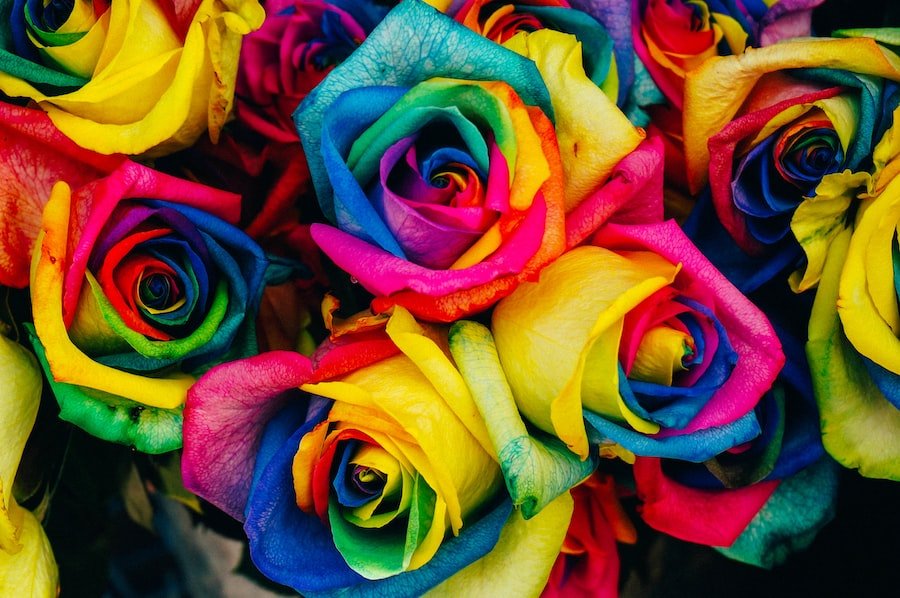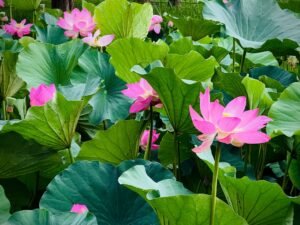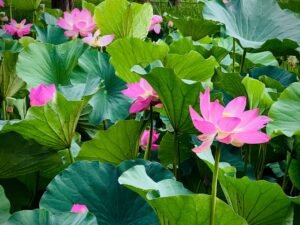

Colors and Descriptions Enhancing Your Chinese Adjective Vocabulary
Adjectives play a crucial role in language learning as they allow us to describe and convey meaning accurately. In the Chinese language, adjectives are particularly important as they help us to express our thoughts, feelings, and observations. In this blog post, we will explore the importance of adjectives in the Chinese language and how they can enhance our vocabulary. We will also provide examples and exercises to help you practice and improve your Chinese adjective vocabulary.
Table of Contents
ToggleThe Importance of Adjectives in Chinese Language
Adjectives are used in the Chinese language to describe nouns and provide additional information about them. They help us to convey specific details, such as color, size, shape, texture, material, emotions, and behaviors. By using adjectives, we can paint a more vivid picture and express ourselves more accurately.
Using adjectives in Chinese is essential for effective communication. Without them, our sentences may sound incomplete or vague. For example, if we want to say “I have a book,” it would be more informative to say “我有一本红色的书” (wǒ yǒu yī běn hóngsè de shū), which means “I have a red book.” By adding the adjective “红色的” (hóngsè de), we provide more information about the book’s color.
How Colors and Descriptions Can Enhance Your Vocabulary
Using colors and descriptions can greatly enhance your vocabulary in the Chinese language. Colors are an essential part of our daily lives, and being able to describe them accurately allows us to communicate more effectively. Descriptions, on the other hand, help us to provide more details about objects or situations.
For example, if you see a beautiful sunset and want to describe it in Chinese, you can say “夕阳是橙色的” (xīyáng shì chéngsè de), which means “The sunset is orange.” By using the adjective “橙色的” (chéngsè de), you are able to convey the specific color of the sunset.
Similarly, if you want to describe a delicious meal, you can say “这顿饭很美味” (zhè dùn fàn hěn měiwèi), which means “This meal is delicious.” By using the adjective “美味” (měiwèi), you are able to express your opinion about the taste of the food.
Basic Color Vocabulary in Chinese
To effectively use adjectives in Chinese, it is important to have a good understanding of basic color vocabulary. Here are some basic colors in the Chinese language:
– 红色 (hóngsè) – red
– 黄色 (huángsè) – yellow
– 蓝色 (lánsè) – blue
– 绿色 (lǜsè) – green
– 白色 (báisè) – white
– 黑色 (hēisè) – black
– 灰色 (huīsè) – gray
– 橙色 (chéngsè) – orange
– 紫色 (zǐsè) – purple
– 粉红色 (fěnhóngsè) – pink
Here are some examples of how to use basic color vocabulary in sentences:
– 这是一件红色的衬衫。(zhè shì yī jiàn hóngsè de chènshān) – This is a red shirt.
– 我喜欢黄色的花。(wǒ xǐhuān huángsè de huā) – I like yellow flowers.
– 那辆车是蓝色的。(nà liàng chē shì lánsè de) – That car is blue.
Advanced Color Vocabulary in Chinese
In addition to the basic color vocabulary, there are also advanced color vocabulary in the Chinese language. Here are some examples:
– 青色 (qīngsè) – cyan
– 深蓝色 (shēnlánsè) – navy blue
– 浅蓝色 (qiǎnlánsè) – light blue
– 深绿色 (shēnlǜsè) – dark green
– 浅绿色 (qiǎnlǜsè) – light green
– 深红色 (shēnhóngsè) – dark red
– 浅红色 (qiǎnhóngsè) – light red
– 深紫色 (shēnzǐsè) – dark purple
– 浅紫色 (qiǎnzǐsè) – light purple
Here are some examples of how to use advanced color vocabulary in sentences:
– 这个房间的墙壁是青色的。(zhè gè fángjiān de qiángbì shì qīngsè de) – The walls of this room are cyan.
– 她穿了一件深红色的裙子。(tā chuān le yī jiàn shēnhóngsè de qúnzi) – She is wearing a dark red dress.
– 这个包包是浅紫色的。(zhè gè bāobāo shì qiǎnzǐsè de) – This bag is light purple.
Describing Shapes and Sizes in Chinese

In addition to colors, adjectives can also be used to describe shapes and sizes in the Chinese language. Here are some examples of shape and size vocabulary:
– 大 (dà) – big
– 小 (xiǎo) – small
– 长 (cháng) – long
– 短 (duǎn) – short
– 圆 (yuán) – round
– 方 (fāng) – square
– 高 (gāo) – tall
– 矮 (ǎi) – short
– 宽 (kuān) – wide
– 窄 (zhǎi) – narrow
Here are some examples of how to use shape and size vocabulary in sentences:
– 这个房间很大。(zhè gè fángjiān hěn dà) – This room is big.
– 这只狗很小。(zhè zhī gǒu hěn xiǎo) – This dog is small.
– 这条裙子很长。(zhè tiáo qúnzi hěn cháng) – This dress is long.
Using Adjectives to Describe Texture and Material
Adjectives can also be used to describe texture and material in the Chinese language. Here are some examples of texture and material vocabulary:
– 光滑的 (guānghuá de) – smooth
– 粗糙的 (cūcāo de) – rough
– 柔软的 (róuruǎn de) – soft
– 硬的 (yìng de) – hard
– 金属的 (jīnshǔ de) – metallic
– 木质的 (mùzhì de) – wooden
– 塑料的 (sùliào de) – plastic
– 纺织品的 (fǎngzhīpǐn de) – textile
Here are some examples of how to use texture and material vocabulary in sentences:
– 这个桌子很光滑。(zhè gè zhuōzi hěn guānghuá) – This table is smooth.
– 这个毛衣很柔软。(zhè gè máoyī hěn róuruǎn) – This sweater is soft.
– 这个杯子是塑料的。(zhè gè bēizi shì sùliào de) – This cup is made of plastic.
Adjectives for Emotions and Feelings in Chinese
Adjectives can also be used to describe emotions and feelings in the Chinese language. Here are some examples of emotion and feeling vocabulary:
– 开心的 (kāixīn de) – happy
– 难过的 (nánguò de) – sad
– 生气的 (shēngqì de) – angry
– 害怕的 (hàipà de) – scared
– 惊讶的 (jīngyà de) – surprised
– 紧张的 (jǐnzhāng de) – nervous
– 平静的 (píngjìng de) – calm
– 兴奋的 (xīngfèn de) – excited
– 疲倦的 (píjuàn de) – tired
– 满意的 (mǎnyì de) – satisfied
Here are some examples of how to use emotion and feeling vocabulary in sentences:
– 我很开心。(wǒ hěn kāixīn) – I am happy.
– 她很难过。(tā hěn nánguò) – She is sad.
– 他生气了。(tā shēngqì le) – He is angry.
Adjectives for Personalities and Behaviors in Chinese
Adjectives can also be used to describe personalities and behaviors in the Chinese language. Here are some examples of personality and behavior vocabulary:
– 友好的 (yǒuhǎo de) – friendly
– 害羞的 (hàixiū de) – shy
– 大方的 (dàfāng de) – generous
– 自信的 (zìxìn de) – confident
– 聪明的 (cōngmíng de) – intelligent
– 善良的 (shànliáng de) – kind
– 懒惰的 (lǎnduò de) – lazy
– 有礼貌的 (yǒulǐmào de) – polite
– 勇敢的 (yǒnggǎn de) – brave
– 耐心的 (nàixīn de) – patient
Here are some examples of how to use personality and behavior vocabulary in sentences:
– 她是一个友好的人。(tā shì yī gè yǒuhǎo de rén) – She is a friendly person.
– 他很害羞。(tā hěn hàixiū) – He is shy.
– 她是一个聪明的学生。(tā shì yī gè cōngmíng de xuéshēng) – She is an intelligent student.
How to Use Adjectives in Chinese Sentences
To use adjectives in Chinese sentences, it is important to understand the sentence structure. In Chinese, the adjective usually comes before the noun it describes. For example:
– 这是一个漂亮的花。(zhè shì yī gè piàoliang de huā) – This is a beautiful flower.
– 我喜欢这个大房间。(wǒ xǐhuān zhè gè dà fángjiān) – I like this big room.
In some cases, the adjective can also come after the noun, but this is less common. For example:
– 这个花漂亮。(zhè gè huā piàoliang) – This flower is beautiful.
– 这个房间大。(zhè gè fángjiān dà) – This room is big.
Practicing Your Chinese Adjective Vocabulary with Exercises
To practice and improve your Chinese adjective vocabulary, here are some exercises you can try:
1. Fill in the blank with the appropriate adjective:s
– 这个苹果是 Zhège píngguǒ shì______。(红色的) (hóngsè de)
– 我很 Wǒ hěn______。(开心) (kāixīn)
– 这个房间很 Zhège fángjiān hěn______。(大) (dà)
2. Translate the following sentences into Chinese:
– The cat is cute.
– He is tall and handsome.
– The food is delicious.
3. Create your own sentences using adjectives to describe colors, shapes, sizes, textures, materials, emotions, personalities, and behaviors.
In conclusion, adjectives play a crucial role in language learning, especially in the Chinese language. They allow us to describe and convey meaning accurately, enhancing our vocabulary and communication skills. By using adjectives to describe colors, shapes, sizes, textures, materials, emotions, personalities, and behaviors, we can paint a more vivid picture and express ourselves more effectively. Practice and improve your Chinese adjective vocabulary by using the exercises provided and continue to explore new ways to incorporate adjectives into your language learning journey.
FAQs
Why is it important to enhance your Chinese adjective vocabulary?
Enhancing your Chinese adjective vocabulary can help you better express yourself in Chinese and improve your communication skills.
How can colors enhance your Chinese adjective vocabulary?
Colors can be used as adjectives in Chinese and can help you describe objects, people, and places more accurately.
What are some common Chinese adjectives that use colors?
Some common Chinese adjectives that use colors include 红色 (red), 黄色 (yellow), 蓝色 (blue), 绿色 (green), and 白色 (white).
How can descriptions enhance your Chinese adjective vocabulary?
Descriptions can help you add more detail and nuance to your Chinese adjectives, making your language more precise and expressive.
What are some common Chinese adjectives that use descriptions?
Some common Chinese adjectives that use descriptions include 大 (big), 小 (small), 长 (long), 短 (short), and 快 (fast).
How can I practice using colors and descriptions in my Chinese vocabulary?
You can practice using colors and descriptions in your Chinese vocabulary by reading and listening to Chinese language materials, practicing with a language partner or tutor, and using flashcards or other study aids.
If you want to learn Chinese, you can register for classes here. We look forward to hearing from you and helping you become fluent in Chinese!
If you want to learn Norwegian, you can register for classes here. We look forward to hearing from you and helping you become fluent in Norwegian.





